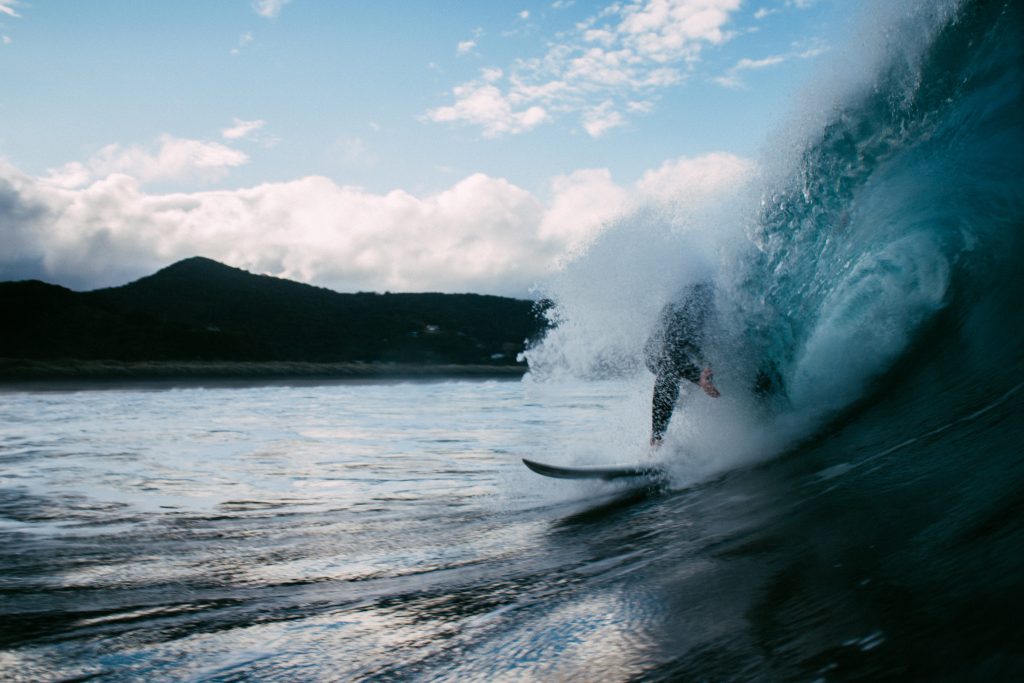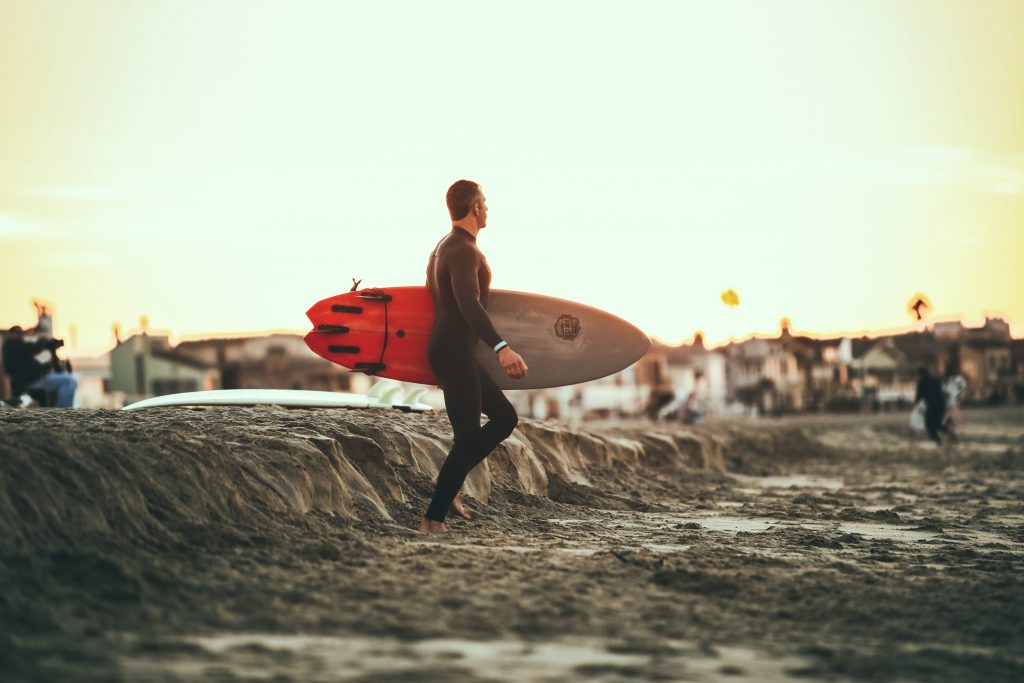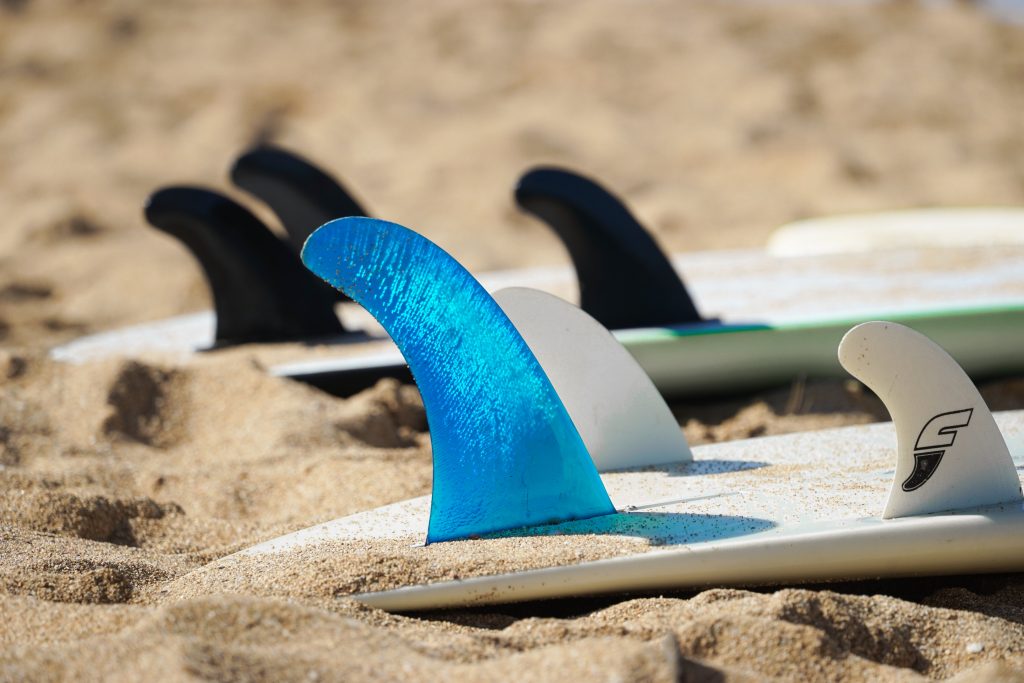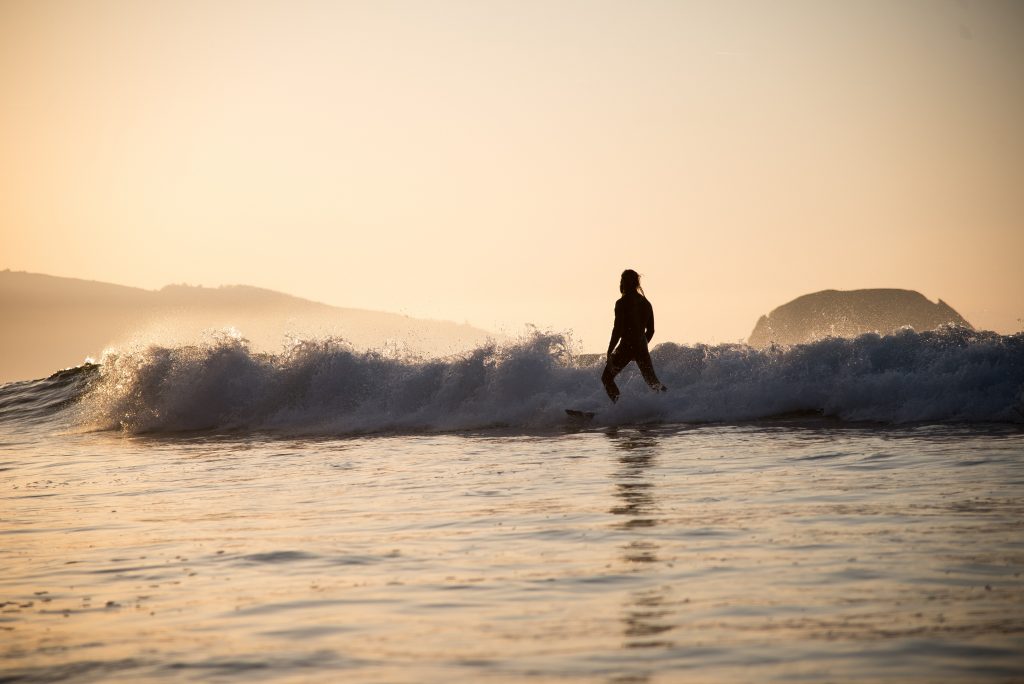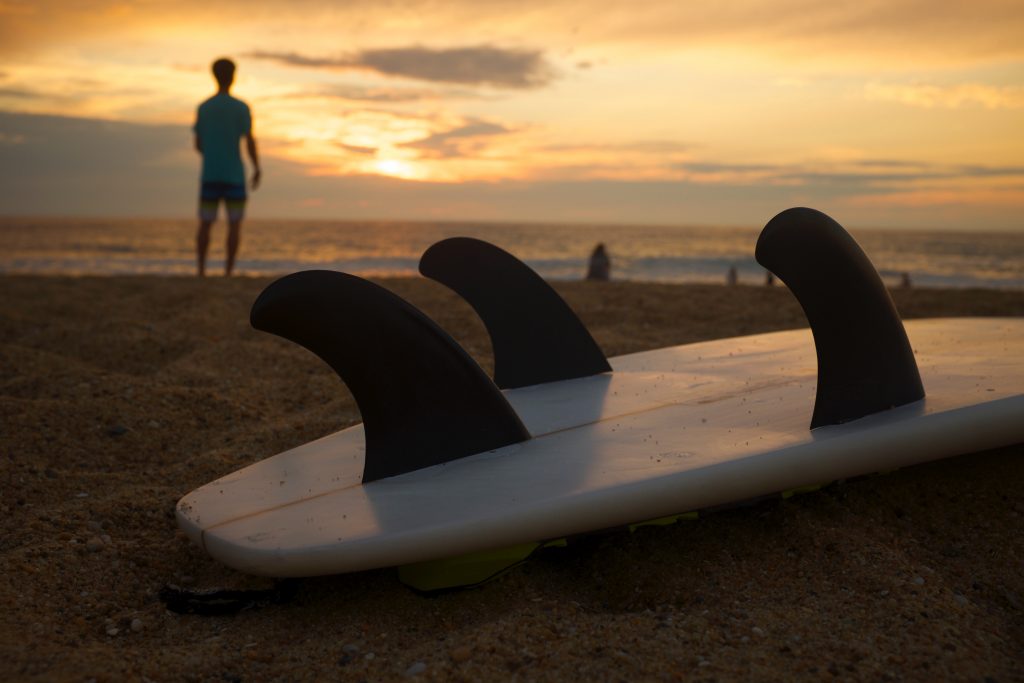Whether you’re just starting to surf or a big-wave pro, everyone has to choose their surfboard. But which one do you choose?
With many factors to consider, choosing the right surfboard for you can be a difficult task. To help make choosing your new surfboard easier, we’ve created a guide for buying a new surfboard and shared our top 10 surfboards for 2018, whatever your ability.
Contents
As you’re surfing ability develops, your surfing needs change. Making alternations to the shape, size and weight of a board, companies tailor their designs to specific types of surfer.
Despite these changes, all surfers must consider the same factors when buying a surfboard:
1.1 Surfboard considerations
Surfboard Type & Size
One of the most important characteristics, surfers must decide what board size to buy. The size of the board varies depending on the person and will change as your skill level increases.
As a general guide:
- Foam Board/ ‘Foamie’ Longboards
Ideal for beginners learning how to surf, these boards are not suitable for catching bigger waves.
- Longboards
Heavier and bulkier than shortboards, longboards are a great alternative to a shortboard and allow you to surf bigger waves.
- Mini-Mal Surfboards
Smaller than a longboard, these are good for very small surfers or those who already have a good ability on longboards.
- Fun Boards ‘Magic Carpets’
Similar to mini-mals, these work best for wave faces that are knee high to overhead in height.
- Performance Shortboards
Fast and response, these boards are perfect for expert surfers.
- Guns
Faster and more stable than a shortboard, these are great for catching a powerful wave like those in Nazare or Zarautz. These are not suitable for beginners.
Rocker
The rocker describes how curved a surfboard is from the nose to the tail.
Affecting both speed and turning, generally:
- Small rockers are better for flat water and are faster than a large rocker.
- Large rockers are better for higher waves and have a better turning ability than small rockers.
Rails
Rails describe the side of your board and come in various options which determine the width of the deck and the volume of the board.
- Soft Rails are best for beginners. They also indicate the deck is flatter and the board has a high volume making it easier to paddle and turn.
- Hard Rails are best for advanced surfers. They’re commonly seen on shorter boards that have less volume and cut into the water.
Fins
The main steering mechanism of the board, fins can be permanent or removable.
You can get different fin set-ups including single, tri and quads. Most have three, with two steering the board whilst the third dictates the direction.
Fins also vary in size, angle and flex.
We would advise beginners start with standard fins.
Bag
There are two types of board bags surfers can buy:
- Day to day bags come in different thicknesses and are great for protecting your boards whilst being stored or travelling to the beach.
- Travel bags are more durable than the day to day bags and are made for air travel or road trips.
Stomp Pad
The stomp pad, also known as the traction pad, helps surfers grip on the board and are great for beginners.
Varying in shape, the will improve your surfing ability and help you get more air on turns.
Leash
It is very important to have a leash that connects you and your board.
Some surfboards already come with this feature, which saves a lot of hassle.
There are different types of leash depending on your board:
- If your board is between 6 feet and 6 feet 10 inches, you will need a 6-foot leash. For boards between 7 foot and 7 feet 10 inches, you will need a 7-inch leash.
- Thickness varies depending on the waves you surf, but the most common is about ¼” thick. If you surf smaller waves and have a small board, 3/16″ is best, which a bigger board in bigger waves will require a 5/16″ leash.
1.2 Surfer considerations
Surfer Skill
Depending on your ability, you will need different amounts of stability.
Beginners should look at boards with a large volume, between 7 – 8-foot-long, 3 inches thick and a minimum of 22 inches wide. They should also consider soft top boards as they float much easier.
Fitness
Surfboards that have a smaller surface area require a higher level of fitness. These boards tend to have better manoeuvrability and less drag.
Boards that have a larger surface area will experience an easier ride.
Height & Weight
You should consider your height and weight when buying a new board.
Heavier & Taller surfers require boards with a higher volume (represent in litres) which also increases the size of the board.
1.3 Surf Considerations
Wave Type
The type of wave you plan to surf should also be considered when deciding which board to choose.
Waves of different heights act very differently, just as surfing in different depths of water is.
Essentially this relies on your experience and the more you surf, the more knowledge you will have.
2.1 Best Surf Boards for Beginners
Greco Surf 7ft Performance Soft Top Foamboard
Perfect in all conditions, the Greco Surf 7ft Performance Soft Top Foamboard offers plenty of versatility. Featuring an epoxy core and a fibreglass shell, the board has a rigid lightweight feel that is easy to manoeuvre in the water. It also comes with a 7-foot leash, so you won’t have the hassle of fitting one yourself.
Wavestorm 8 ft Soft Foam Construction Classic Surfboard
Ideal for beginners, the Wavestorm Soft Foam Construction Classic Surfboard has extra volume and length to make wipeouts a little kinder. Featuring a strong EPS core, the board has a traction pad and a removable ankle leash for added convenience.
Surftech “Friendly Fish” Foam Surfboard
Available in any length from 5 foot 6 inches to 10 foot, the Surftech “Friendly Fish” Foam Surfboard is one of the best selling surfboards on the market. Featuring soft board technology that has been perfected over the last 20 years, it is extremely durable and includes an ankle leash and removable fins.
Golf Coast 8ft 8inch Heritage Soft Top Surfboard
A great length for beginners, the Golf Coast 8-foot 8-inch Heritage Soft Top Surfboard will be appreciated by surfers of all levels. Featuring a round nose and rubber tipped tail, the sleek frame is easy to manoeuvre and catches waves smoothly.
2.2 Best Surf Boards for Intermediates
Channel Islands Mini Surfboard 5ft 3inch FCS II – White
One of the best boards on the market, Channel Islands Mini Surfboard 5ft 3 FCS II has an incredible feed. Featuring a small rocker and a five fin setup with a squash tail, it combines control with an outstanding paddle speed that is best enjoyed in knee to head high surf.
Raystreak 7ft 2inch Crocodile Groove Soft Surfboard Beach Ocean Surfing Body Foamie Board
With extra padding around the nose and tail, the Raystreak Crocodile Groove Soft Surfboard is long-wearing and perfect for advancing your surfing skills. Featuring a lightweight fibreglass core, the board has been reinforced with stringers and sealed with epoxy to ensure maximum durability.
Gold Coast 8ft Verve Surf Board
Combining stability with performance, the Gold Coast 8ft Verve Surf Board an ideal board for taking your surfing ability to the next level. Great in any conditions, the board is created through a Mold and Vacuum Sealed process to give it extra strength and durability. In addition, the tri-fin system will let you ride the Verve with multiple configurations.
2.3 Best Surf Boards for Experts
Surftech ThumbDrive HD-E Surfboard
Best suited for light riders or those who like a small board, the Surftech ThumbDrive HD-E Surfboard has one of the highest durability ratings. Featuring a lightweight EPS core and a five fin set up, this board is extremely thin and is easy to keep in a straight line on the waves.
BIC Sport ACE-TEC Surfboard
30% stronger than traditional surfboards, the BIC Sport ACE-TEC Surfboard has been designed to be a lightweight, durable and high-performing board. Featuring a three fin set up that enables you to ride any type of wave, the board comes in a range of sizes so everyone can enjoy it!
Boardworks 5ft 6inch Poly Mini Mod 2 Surfboard
A great option for those looking to make the most out of every ride, the Boardworks 5ft 6 inch Poly Mini Mod 2 Surfboard is one of the most versatile boards around. Featuring a wide tail to give you a large footprint, the board can reach top speeds in calm water. Fitted with a five box fin setup, it is easy to manoeuvre and gives the surfer ultimate control.
We hope this guide has helped you understand what to look for when buying a new surfboard and given you some inspiration for your new 2018 ride.
If you’re planning a surf holiday this year, get a quote for your surf-holiday transfer now! Sea-Lifts will transport you from the airport to top surf resorts with the option of adding your surfboard as luggage.
